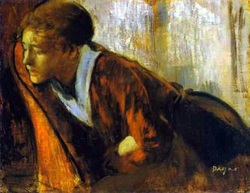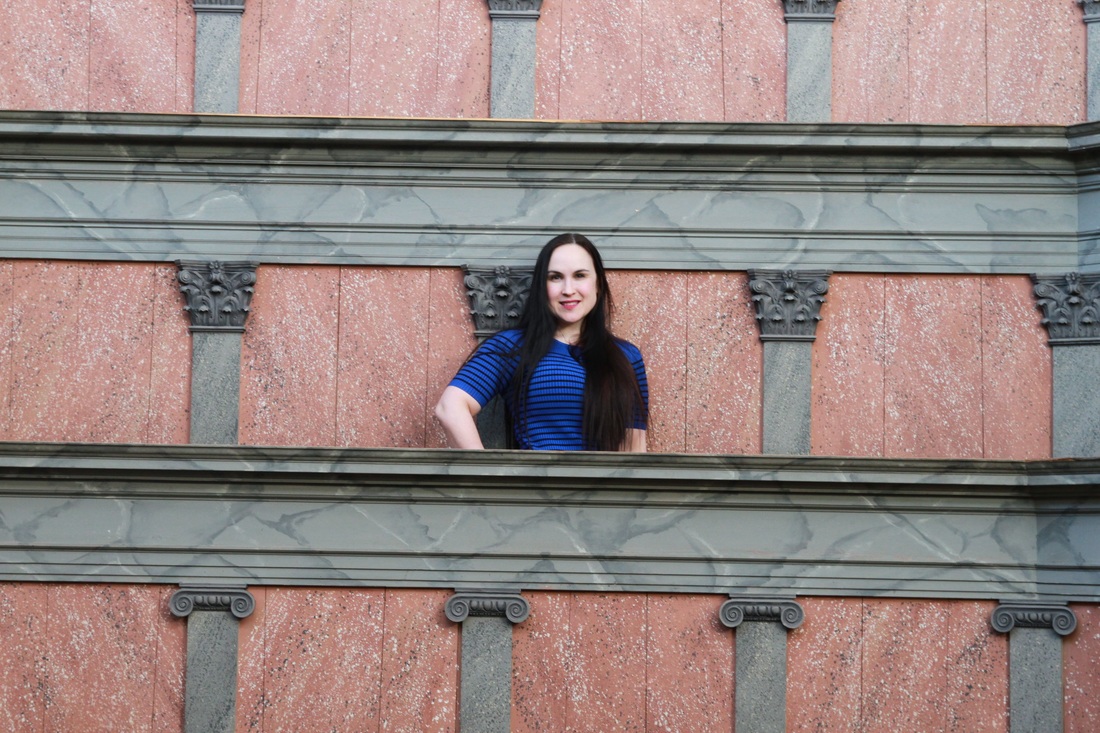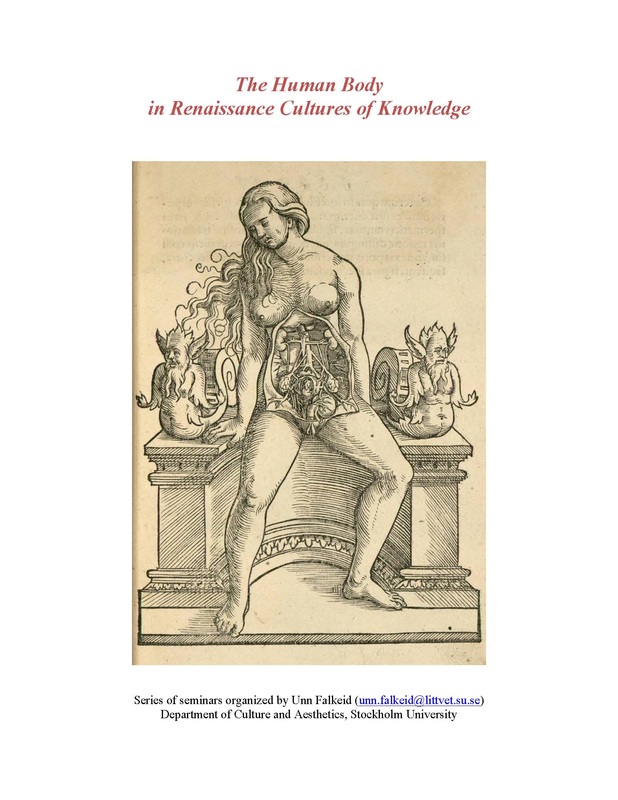|
I am currently a guest blogger for Tidningen Curie, the online journal of the Swedish Research Council. You can read my blog in Swedish here. Photo: Anders Holm
 You can purchase Words and Matter: the Virgin Mary in Late Medieval and Early Modern Parish Life through here the publisher Runica et Medievalia in Stockholm.  2014 was a particularly strong year for historical fiction. However, What Is Visible stood out by far. You can read about the other commended novels for the Langum Prize for American Historical Fiction here. What Is Visible by Kimberly Elkins lyrically revives a significant and intriguing figure in the history of disability. Laura Bridgman (d. 1889) was a celebrity in her lifetime though overshadowed by Helen Keller now. Stripped of sight, hearing, taste and smell by scarlet fever in her childhood, Bridgman served as a poster child for the Perkins School for the Blind and various intellectual causes such as phrenology and anti-Calvinism. Laura's desperate need to command attention and to please others conflicts with her desire for a private life distinct from any larger cause. Through meticulous archival and imaginative labour, Elkins provides Bridgman with an inner life that offers a daring and convincing account of a woman who observes and communicates only through touch. As the author articulates in the appendix, the novel concerns “what might have happened as well” rather than “what might have happened instead.” Following this method, Elkins attends to Bridgman's parameters for pleasure, longing, deprivation and defiance with a narrative voice that evokes sympathy without sentimentality. Most of the novel gathers snugly around Bridgman's life and perceptions, interspersed with the perspectives of those around her. In addition to the host of passing contemporary notorieties, such as Charles Dickens, who visit and comment upon her, Bridgman's life intersects with prominent figures in more sustained ways. These include her doctor Samuel Gridley Howe, the poet Julia Ward Howe, and even the abolitionist John Brown. Both for its historical dexterity and its compelling narrative voice, What Is Visible is strongly deserving of the prize.  At the moment, I am editing a collection of essays with a colleague on the Virgin Mary. It should be out next Spring. Here is the working draft of the epilogue... Mary: the Return Virginia Langum My most profound experience with the Virgin Mary was in Uppsala Cathedral after finishing a job interview about a year ago. Nervous and innervated, and a little sleep deprived, I was perhaps primed for such an experience. Behind the main chancel, a strange, small woman caught my gaze. She was perfectly still, reflecting upon the ornate chapel where the Swedish King Gustav Vasa lay buried with various family members. I assumed, perhaps due to the heard scarf, she was a conservative believer, a pilgrim. I worked slowly around her trying not to disturb her reflection. After discreetly staring at her, I began to approach, stopping and starting several times, prepared to apologise. As the reader no doubt has already suspected, the woman was made of wax. ‘Mary: the Return’ or ‘Maria återkomst’ stands in oblique position to the king Gustav Vasa’s tomb, what was once a chapel dedicated to the Virgin Mary in the Middle Ages. Gustav Vasa chose his burial place ten years before his death in 1560; however, Mary was further displaced in the 1800s with a series of baroque, nationalistic scenes from the life of the former king. Mary returned to Uppsala officially in 2005, with unplaceable ethnic features and simple clothing. At once eerily vivid and timeless, Anders Widoff’s Mary engages in a powerful diachronic dialogue with the older yet more transient icon Gustav Vasa. In so doing, her return to the cathedral witnesses the disillusionment with both Swedish nationalism and secular hubris. Others have remarked upon her ‘return’ more generally in the Swedish Church. In the revised hymnbook of 1983, for example, additional hymns are dedicated to her. This may be evidence of her alleged growing importance in Protestantism. Several recent works and collections written by or containing essays by Protestant theologians attest to this. Some of these titles include Beverly Roberts Gaventa and Cynthia L. Rigby’s Blessed One: Protestant Perspectives on Mary (2002); Carl E. Braaten and Robert W. Jenson’s Mary, Mother of God (2004); Shannon Kubiak’s God Called A Girl: How Mary Changed Her World—And You Can Too (2005); Tim Perry’s Mary for Evangelicals (2006); and Scot McKnight’s The Real Mary: Why Evangelical Christians Can Embrace the Mother of Jesus (2006). In the late twentieth and early twenty-first centuries, Mary continues to be a subject of fascination and devotion in traditional and non-traditional sacred sites, attracting more numerous and more diverse pilgrims than ever. She has even featured in online apparitions as documented in Paolo Apolito’s The Internet and the Madonna (2005). She has also figured prominently in contemporary medieval studies of late, and scholars have produced several comprehensive studies, such as Miri Rubin’s Mary: Mother of God (2009) as well as many studies with particular generic, comparative or geographical foci, such as Mary F. Thurlkill’s Chosen Among Women: Mary and Fatima in Medieval Christianity and Shi’ite Islam (2007, Lesley Twomey’s The Serpent and the Rose: The Immaculate Conception and Hispanic Poetry in the Late Medieval Period (2008) and Adrienne Williams Boyarin’s Miracles of the Virgin in Medieval England (2008). Although one might wonder whether her return was preceded by a departure. Or rather as Miri Rubin suggests she is a ‘constant presence’ standing, however humbly, in the shadows of the Reformation. The waxen immediacy of the Uppsala Mary is an appropriate medium for representing a figure characterised by flexibility across communities, periods and ideologies. As a recent interdisciplinary collection has demonstrated, contemporary Mary represents both a hope for social and economic justice and a tool for repressive regimes (see Moved by Mary: the Power of Pilgrimage in the Modern World). Likewise she has been reappropriated by feminist theologians and denounced as a patriarchal ideal by others, see Tina Beattie’s God’s Mother, Eve’s Advocate: a Gynocentric Refiguration of Marian Symbolism in Engagement with Luce Irigaray (1999). However, Mary’s dexterity as a religious and cultural symbol precedes our recent own centuries. Some of her richness and ambiguity is captured in the diversity of essays in this volume. Like the Uppsala Mary, we hope it may invite conversation across not only those interested in the medieval and early modern periods, but also in our own.  A short piece I wrote about procrastination for the Umeå University magazine: I spend my days thinking about the sins of others but rarely my own. Before you find me guilty of pride or envy, the others I think about lived in the Middle Ages, and many of their offenses seem obscure now. However, every once in a while, my reading resonates with the modern university experience. For example, a passage written in the twelfth-century by the Anglo-Scottish monk Adam of Dryburgh notes how scholars can be “ready and quick to jokes, funny stories and idle talk, but quite slow and lazy to be silent and to take up something useful or some spiritual exercise.” What Adam describes here, more than pride or envy, is arguably the most common academic vice: procrastination. Procrastination, or delay of what is often necessary and important, is understood as a type of sloth or sadness in the Christian tradition: wherever time is understood as finite and sacred, as it is in most religious and secular conceptions, to waste it is to sin. Yet procrastination and writing have been faithful companions for centuries, and academics have all sorts of writing deadlines -- for articles, books, course outlines, grant proposals. Faced with my own deadlines, I follow the American critic and poet Dorothy Parker’s method: “I can’t but write five words but that I change seven.” Parker describes procrastination due to perfectionism while Scot speaks to a deeper insecurity about the academic pursuit: “a dullness of the mind and disgust of the heart” resulting in “an enormous loathing” within. Although many procrastinators are racked by perfectionism, guilt or insecurity, some also take pleasure in their procrastination. My favorite procrastinator, well-loved by fellow modern and medieval sinners, is St. Augustine of Hippo (d. 430.) Although Augustine became one of the most productive and influential moralists of the Middle Ages, he delays reforming the lustful behavior of his youth. As he begs God in the Confessions: “Grant me chastity and continence, but not yet.” The New York Times ran a story today about "thematic" investing in collections of stocks related to the seven deadly sins. For example, the gluttony portfolio includes stock in wine and spirits giant Brown-Forman, Philip Morris International and McDonald’s.
|
AuthorI am an associate professor at Umeå University and a fellow at the Swedish Collegium for Advanced Study in Uppsala. Archives
July 2016
Categoriespremodern conversations |





 RSS Feed
RSS Feed
